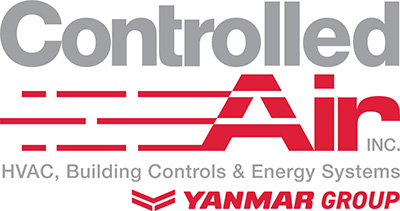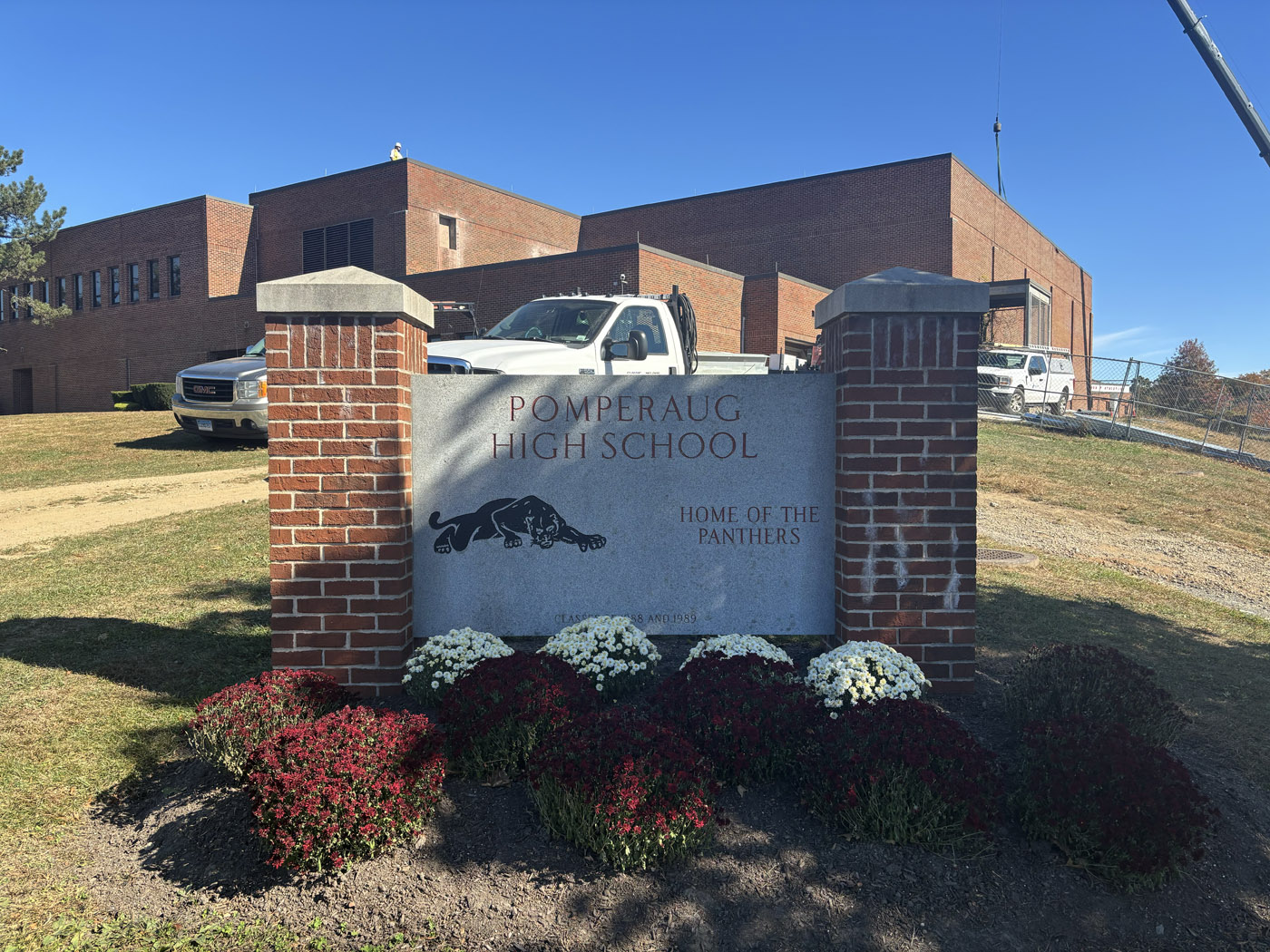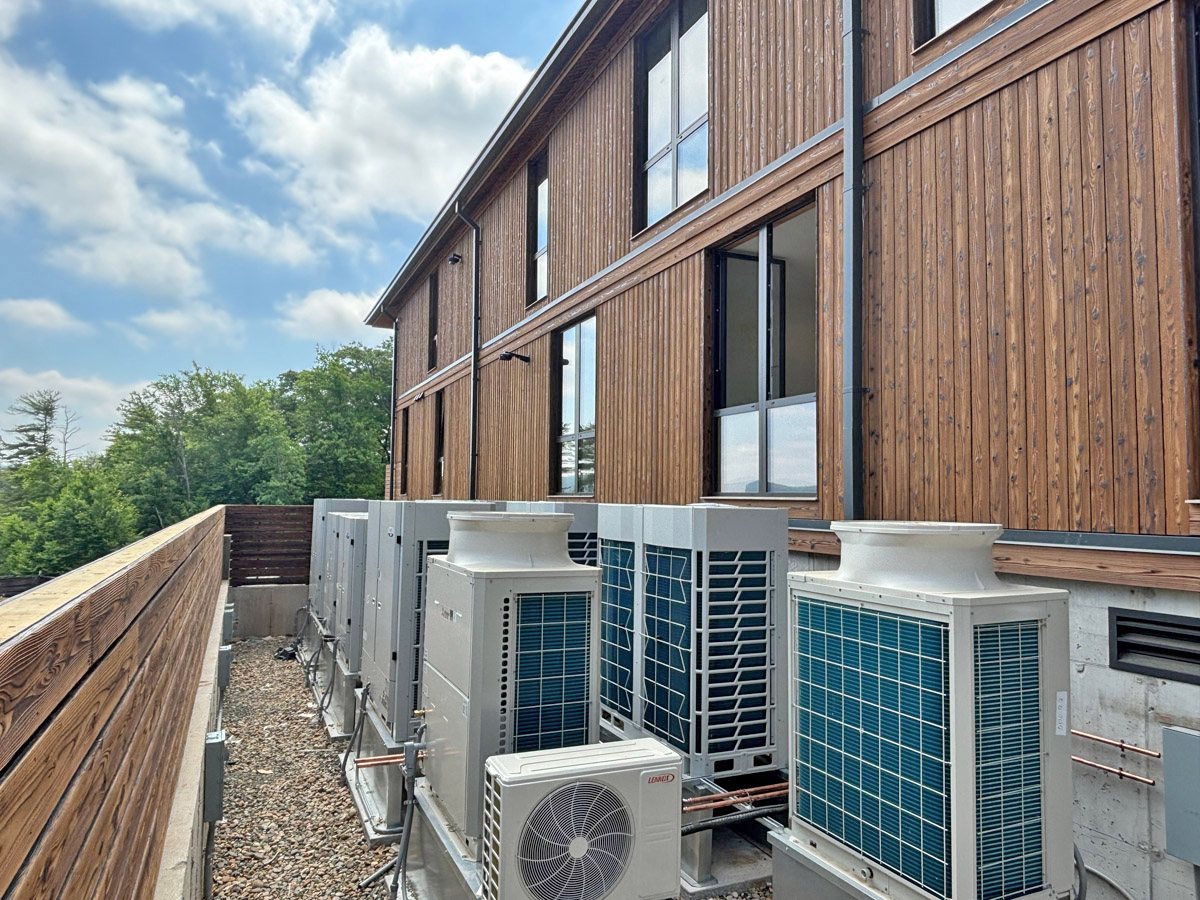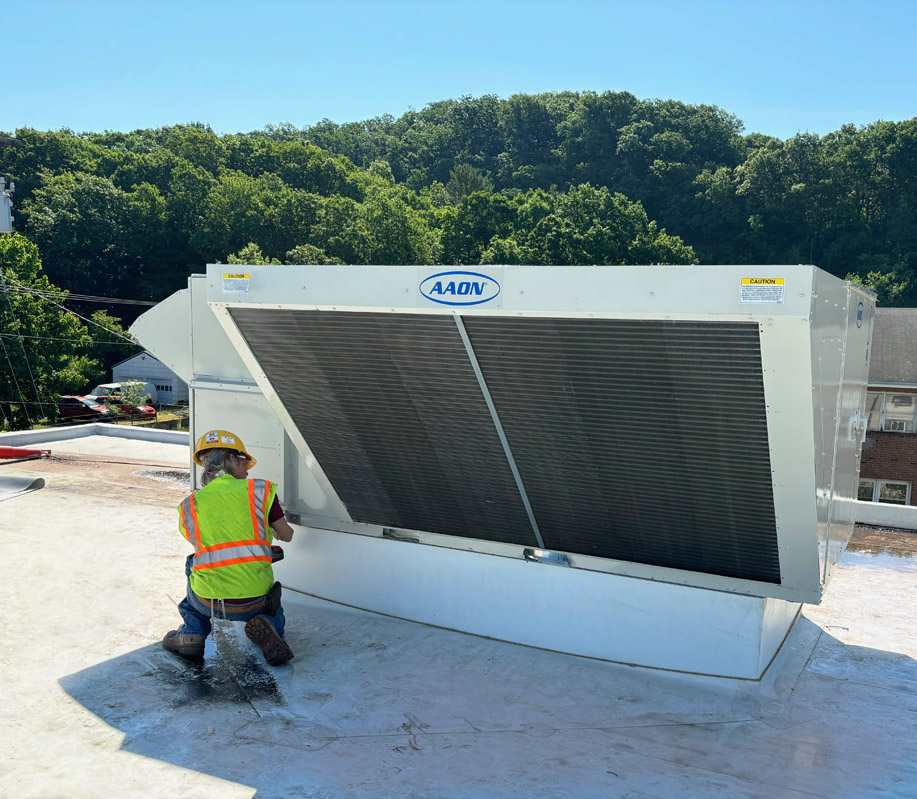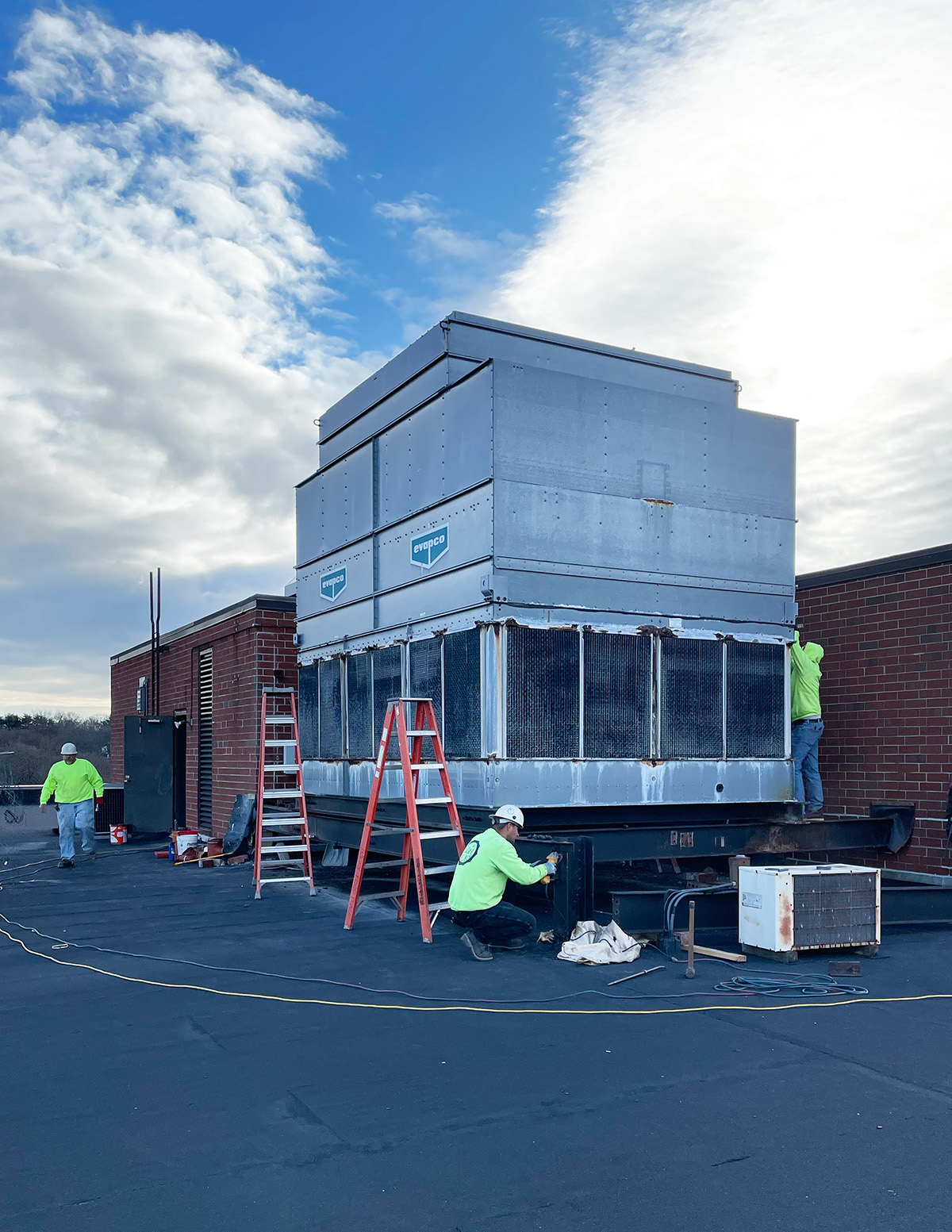HVAC Refrigeration Updates in 2024
Refrigeration Requirements
The EPA and federal government has implemented the next round of refrigeration requirements, and outlined those for the next 2 decades. In previous years, R22 was phased out, in the next phase of the process R410A will be reduced and then discontinued altogether.
As a Controlled Air customer, we wanted to make sure you are kept abreast of the current changes. If you have a current HVAC system using R410A, we will continue to be able to maintain your system with your current refrigerant for the next 10 or more years. As the reduction in production continues there will be an increase in the cost of refrigerant. Starting in 2025 new systems installed will use the R454B or R32 refrigerant.
QUICK FACTS:
- Older refrigerants and equipment that use them are being phased out due to environmental impact.
- New equipment will have the newer refrigerants starting next year, Equipment components and legacy refrigerants will still be available, but supplies will become limited in future years and prices will increase as a result.
- All our technicians are trained to handle both types of refrigerants.
Enacted in late 2020, the American Innovation and Manufacturing (AIM) Act directs the EPA to address HFC emissions through legislative activities.
The AIM Act includes:- Decreasing HFC production and consumption;
- Promoting the adoption of next-generation technologies through industry-specific restrictions; and
- Establishing standards for managing the existing stock of HFCs and their substitutes.
- Under the first point, HFC production was initially reduced by 10% in January 2022. A much larger stepdown occurs in January 2024, when production of HFCs will be cut an additional 30%, for a total 40% reduction from the baseline. Another big reduction comes in 2029, when HFC production will be cut an additional 30%, or 70% from the baseline.
- EPA banned the use of high-GWP HFCs such as R-410A in new HVAC equipment, starting in January 2025
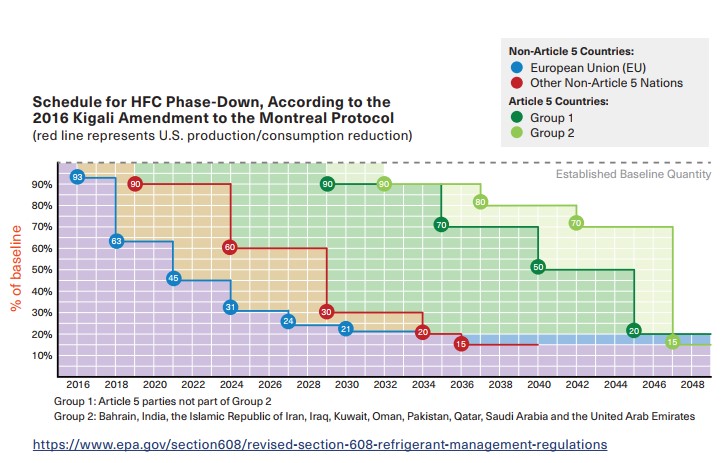
HVAC Refrigerant Changes
In September 2021, the EPA released its detailed plan to drastically reduce HFC consumption from 2022 through 2036. These plans will impact our customers as the new EPA regulations shift from R410A refrigerant to R454B or R32. R22 was perviously banned for its environmental impact with R410A being considered a better replacement. Now as environmental standards become more strict, R410A, commonly known as Puron, is a hydrofluorocarbon (HFC), is being replaced by R454B or R-32 (depending on the manufacturer), an environmentally friendly alternative that offers improved energy efficiency and reduced carbon footprint for HVAC systems. These refrigerants can provide the same cooling abilities without the high greenhouse gas and HFC emissions, making them a suitable alternative for most systems.
It’s also important to understand that existing HVAC units cannot accommodate A2L refrigerant without substantial retrofitting. With this in mind, A2L refrigerant should be used only in new systems designed explicitly with this refrigerant type. Our technicians are trained to work with all refrigerants encountered in HVAC equipment.
Going forward new systems will be built requiring the new refrigerant types and there will be a gradual decrease in production of R410A. The current plan shows a 70% decrease by 2029; 80% decrease by 2034, and an 85% reduction by 2036.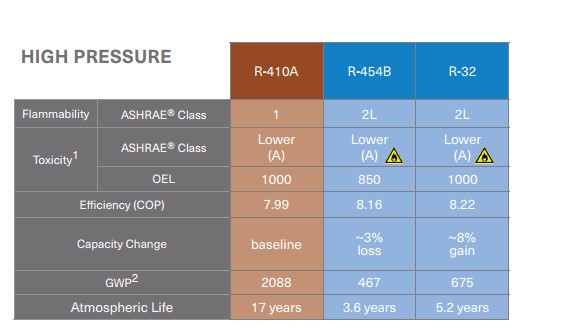
Leak Repair Provisions
New refrigerant regulation also aims to minimize refrigerant leaks in HVAC units and commercial refrigeration systems by implementing strict leak repair provisions. These regulations require equipment owners and operators to promptly repair leaks when the leak rate exceeds a certain threshold, as determined by the EPA. The provisions also mandate the use of leak detection and repair practices to prevent the release of environmentally harmful refrigerants.
One significant change in EPA Section 608 pertains to restrictions on the sale of refrigerants. These provisions stipulate that only certified service technicians may purchase or handle refrigerants with a GWP exceeding a specific threshold. This ensures that only professionals with proper training in refrigerant management handle ozone-depleting refrigerants, reducing the risk of leaks and emissions.
Our highly skilled technicians are all OSHA-certified, have EPA licenses to handle refrigerants, and follow all guidelines for hazardous waste material disposal.
Impacts of New Regulations on HVAC Contractors and Technicians
Maintenance and Recordkeeping Requirements
The new refrigerant regulations impose updated maintenance and recordkeeping requirements to ensure proper refrigerant management. These provisions require service technicians to recover any released refrigerants during system maintenance and verify the absence of new leaks after repairs. HVAC professionals are also required to maintain detailed logs of refrigerant use, storage, and disposal to track refrigerant inventory and comply with EPA rules.
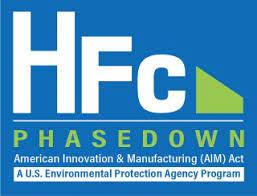 Increased Compliance and Enforcement from EPA
Increased Compliance and Enforcement from EPA
With the introduction of the new refrigerant regulations, the EPA is expected to enhance its compliance and enforcement efforts. This means HVAC contractors and technicians can anticipate more frequent inspections and audits to ensure adherence to the new regulations and proper refrigerant handling. The EPA may impose strict fines and penalties on businesses found to be non-compliant. Therefore, contractors and technicians must be prepared for these inspections by obtaining the necessary certifications, using proper tools and equipment, and following the new regulations closely.
Controlled Air will stay on top of the new refrigerant requirements so you don’t have to. We will send additional news as we learn more. In the meantime, be sure that Controlled Air is staying on top of regulations and making sure all our technicians are properly trained to handle refrigerants.
Have Questions? Contact our service department